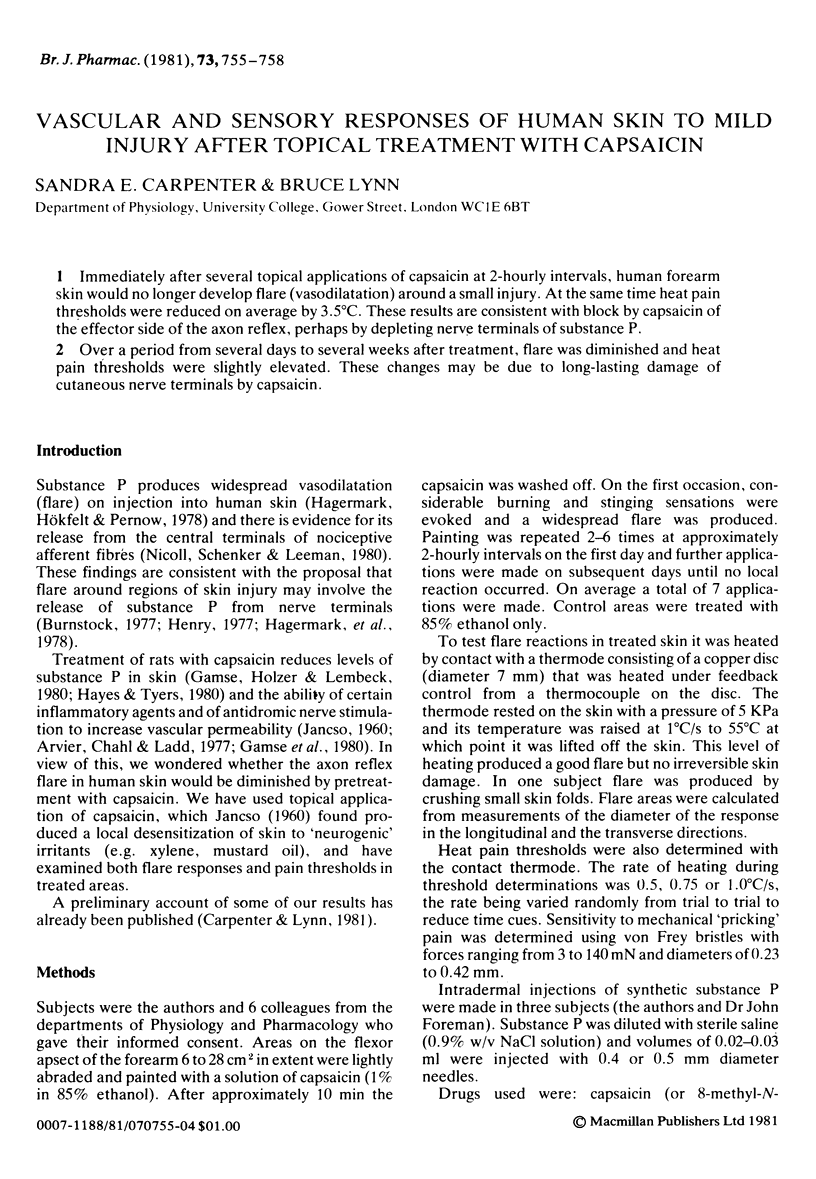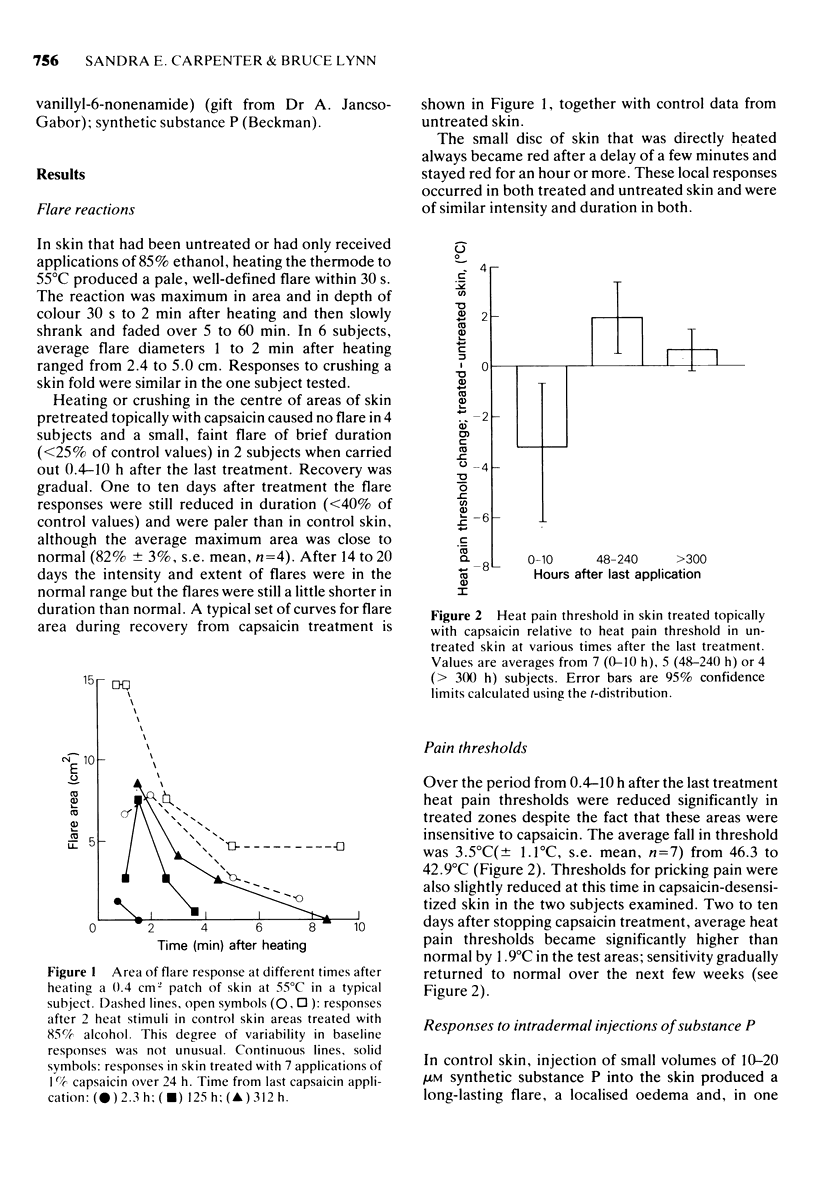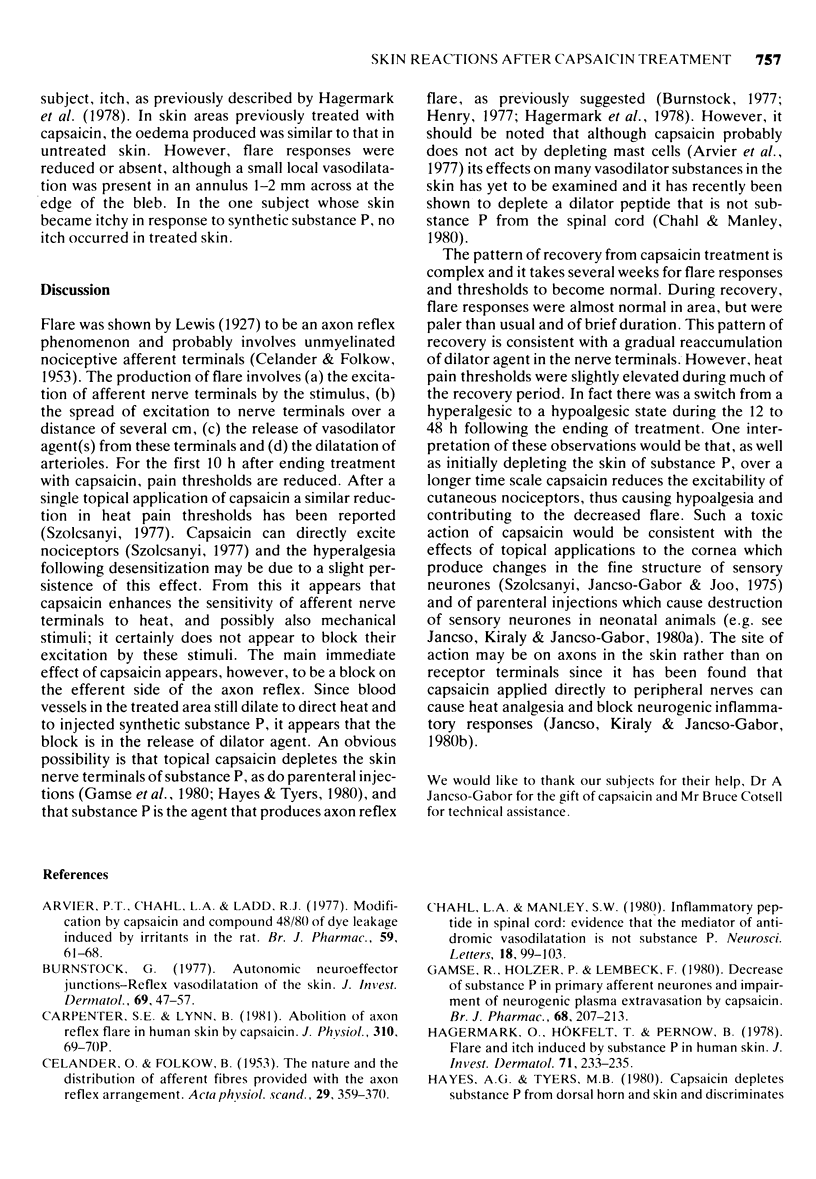Abstract
1 Immediately after several topical applications of capsaicin at 2-hourly intervals, human forearm skin would no longer develop flare (vasodilation) around a small injury. At the same time heat pain thresholds were reduced on average by 3.5 degrees C. These results are consistent with block by capsaicin of the effector side of the axon reflex, perhaps by depleting nerve terminals of substance P. 2 Over a period from several days to several weeks after treatment, flare was diminished and heat pain thresholds were slightly elevated. These changes may be due to long-lasting damage of cutaneous nerve terminals by capsaicin.
Full text
PDF



Selected References
These references are in PubMed. This may not be the complete list of references from this article.
- Arvier P. T., Chahl L. A., Ladd R. J. Modification by capsaicin and compound 48/80 of dye leakage induced by irritants in the rat. Br J Pharmacol. 1977 Jan;59(1):61–68. doi: 10.1111/j.1476-5381.1977.tb06977.x. [DOI] [PMC free article] [PubMed] [Google Scholar]
- Burnstock G. Autonomic neuroeffector junctions--reflex vasodilatation of the skin. J Invest Dermatol. 1977 Jul;69(1):47–57. doi: 10.1111/1523-1747.ep12497872. [DOI] [PubMed] [Google Scholar]
- CELANDER O., FOLKOW B. The nature and the distribution of afferent fibres provided with the axon reflex arrangement. Acta Physiol Scand. 1953 Nov 17;29(4):359–370. doi: 10.1111/j.1748-1716.1953.tb01032.x. [DOI] [PubMed] [Google Scholar]
- Chahl L. A., Manley S. W. Inflammatory peptide in spinal cord: evidence that the mediator of antidromic vasodilatation is not substance P. Neurosci Lett. 1980 May 15;18(1):99–103. doi: 10.1016/0304-3940(80)90219-0. [DOI] [PubMed] [Google Scholar]
- Gamse R., Holzer P., Lembeck F. Decrease of substance P in primary afferent neurones and impairment of neurogenic plasma extravasation by capsaicin. Br J Pharmacol. 1980 Feb;68(2):207–213. doi: 10.1111/j.1476-5381.1980.tb10409.x. [DOI] [PMC free article] [PubMed] [Google Scholar]
- Hägermark O., Hökfelt T., Pernow B. Flare and itch induced by substance P in human skin. J Invest Dermatol. 1978 Oct;71(4):233–235. doi: 10.1111/1523-1747.ep12515092. [DOI] [PubMed] [Google Scholar]
- Jancśo G., Király E., Jancsó-Gábor A. Direct evidence for an axonal site of action of capsaicin. Naunyn Schmiedebergs Arch Pharmacol. 1980 Aug;313(1):91–94. doi: 10.1007/BF00505809. [DOI] [PubMed] [Google Scholar]
- Nicoll R. A., Schenker C., Leeman S. E. Substance P as a transmitter candidate. Annu Rev Neurosci. 1980;3:227–268. doi: 10.1146/annurev.ne.03.030180.001303. [DOI] [PubMed] [Google Scholar]
- Szolcsányi J. A pharmacological approach to elucidation of the role of different nerve fibres and receptor endings in mediation of pain. J Physiol (Paris) 1977 Sep;73(3):251–259. [PubMed] [Google Scholar]
- Szolcsányi J., Jancśo-Gábor A., JOO F. Functional and fine structural characteristics of the sensory neuron blocking effect of capsaicin. Naunyn Schmiedebergs Arch Pharmacol. 1975;287(2):157–169. doi: 10.1007/BF00510447. [DOI] [PubMed] [Google Scholar]


